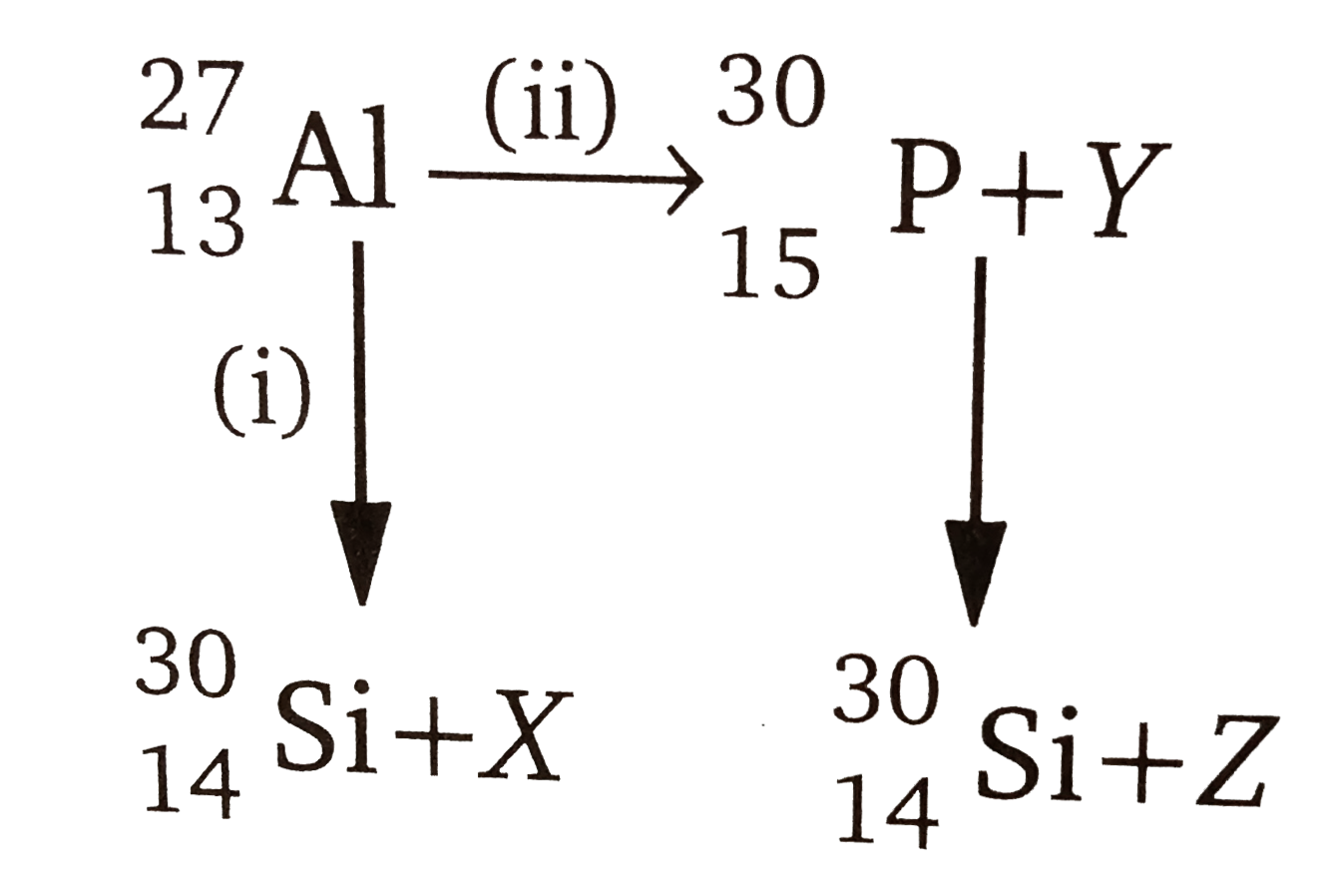Complete Solutions to Exercies 4 of chapter RADIO ACTIVITY of Class 11 book with complete answers and questions
| Class 11 | CHEMISTRY |
| Chapter | RADIO ACTIVITY |
| P BAHADUR | Exercies 4 |
| Number Of Questions | 17 |
| Academic Year | 2023-24 |
The intergrated rate equation is
`Rt = log, C_(0) - log C_(t)`. The straight line graph is obtained by plotting:
View Solution`beta-` particle in radioactivity is emitted by:
View SolutionThe half-life of a radioactive isotope is 3 hour. IF the initial mass of isotope were `256g` the mass of it remaining undercayed after `18hr` is:
View SolutionThe radioactive nuclide `._(90)^(234) Th` shows two successive `beta-` decay followed by one `alpha-` decay. The atomic number and mass number respectively of the resulting atom is:
View SolutionConsider the follwing nuclear reactions:
`._(92)^(238) M rarr ._(y)^(x)N + 2 ._(2)He^(4)`
`._(y)^(x)N rarr ._(B)^(A)L + 2beta^(+)`
View SolutionThe half-life of a radioisotoe is four horu. If the initial mass of the isotope was `200g`, the mass left after 24 hour undercayed is:
View SolutionHydrogen bomb is based on the principle of
View SolutionA photon of hard gamma radiations knocks out a proton for `._(12)^(24)Mg` nucleaus to from:
View SolutionIn the transormation fo `._(992)^(238)U` to `._(92)^(234)U`, if one emission is an `alpha-` particle, what should be the other emission(s)?
View SolutionA radioactive element gets spilled over the floor of a room. Its half life period is 30 days. If the initial activity is ten times the permissibel value, after how many days will it be safe to enter the room?
View SolutionWhich of the follwong nuclear reactiosn will generate an isotope?
View Solution`._(13)Al^(27)` is a stable isotope. `._(13)Al^(29)` is expected to disintegrate by
View SolutionThe number of neutrons accompanying the formation of `._(54)Xe^(139)` and `._(38)Sr^(94)` from the absorption of a slow neutron by `._(92)U^(235)`, followed by nuclear fission is
View SolutionDecreases in atomic number is observed in:
View Solution`.^(23)` Na is the more stable isotope of Na. Find out the process by which `._(11)^(24)` Na can undergo radioactive decay.
View SolutionA positron is emitted from `._(11)Na^(23)` . The ratio of the atomic mass and atomic number of the resulting nuclide is
View SolutionBombaradment of aluminium by `alpha-` particle leads to its artifical disinetegration in two ways, (i) and (ii) as shwon. Produces `X,Y` and `Z` respectively are,

View Solution
Exercies 4 questions and complete solutions for chapter RADIO ACTIVITY of P BAHADUR CHEMISTRY (HINGLISH) of Class 11